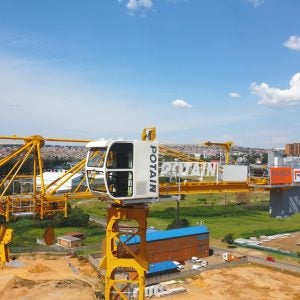The ruling came about after Matthew Cooney, trading as M C Blasting, had his vehicle impounded, for operating it without the appropriate operators licence, under regulation 3 of the Goods Vehicle (Enforcement Powers) Regulations 2001. Cooney had made a request to the Transport Commissioner for the Scottish Traffic Area, Joan Aitken, asking that the Hiab crane fitted to the vehicle be returned. Cooney said the crane “is not part of the vehicle and cost a substantial sum”, arguing that this made it part of the vehicles contents, and that it should therefore be returned.
The Traffic Commissioner called a hearing into the request. The traffic examiner, Mr Turnbull, told the hearing that the crane could be taken on and off the vehicle, and was “not a permanent feature of the vehicle”, but had been bolted on.
Cooney told the Traffic Commissioner that he had spent a day attaching the crane, after he had bought the truck. He said that the crane had cost £16,000, and that he had mounted it using a saddle and eight bolts.
The Traffic Commissioner rejected Cooney’s request, saying “It is now for VOSA [the Vehicle & Operator Services Authority] to deal with the detained vehicle. That includes the crane. From the evidence I find that the crane is part of the vehicle being bolted to it and intrinsic to its use.” Cooney appealed against this decision, taking it to the a hearing of Transport Tribunal, in front of Hugh Carlisle QC, president of the tribunal, Leslie Milliken and Patricia Steel.
Cooney was represented at the tribunal by Michael Whiteford, of Jeffrey Aitken solicitors. Whiteford told the tribunal that the commissioner had misdirected herself in considering whether the crane had been part of the vehicle and intrinsic to its use. In fact, it was held on only by eight bolts and was detachable. Accordingly, he said, it did not constitute part of the vehicle but was ‘contents’ which were returnable by reason of regulation 16 of the 2001 goods vehicle regulations.
The tribunal, in their written decision, explained that the scheme of the regulations should be considered, and in particular in light of the related 1995 Goods Vehicles (Licensing of Operators) Act, in order to decide whether the regulations included the crane as part of the vehicle (liable to be impounded) or its contents, which should be returned to the owner. Importantly, section 58 of the 1995 Act defines a goods vehicle as “a motor vehicle constructed or adapted for use for the carriage of goods.” That is, it does not limit its scope to vehicles as constructed by the original vehicle manufacturer, but includes adaptations.
They say that, “The relevant distinction is between ‘the vehicle’ and ‘its contents’. The word ‘contents’ is wider than eg. ‘goods’ or ‘load’ and includes eg. the driver’s personal belongings. Each case turns on its own facts. The evidence here indicates that after purchase of the truck the appellant fitted the crane to it and then used the truck so adapted for his business of carrying scrapped cars, on which he was engaged at the time of the detention. In the circumstances it is plain to us that the crane not was then part of ‘the contents’. On the contrary, the crane was being used as part of the vehicle and on the evidence had so been used for the period since purchase and adaptation of the truck by the Appellant.”
On this basis, the tribunal rejected the appeal and said that “although we might have expressed ourselves slightly differently we agree with the Traffic Commissioner. The appeal is dismissed.”
The full written ruling Transport Tribunal ruling
Related Files
Transport Tribunal ruling






